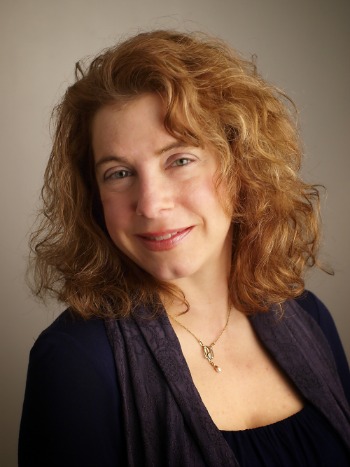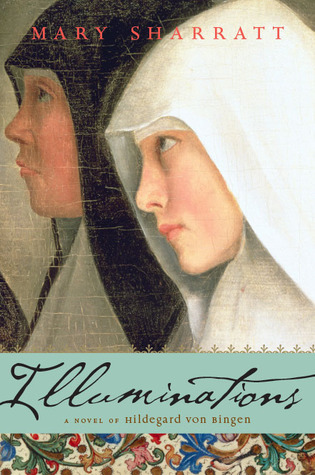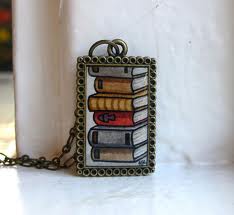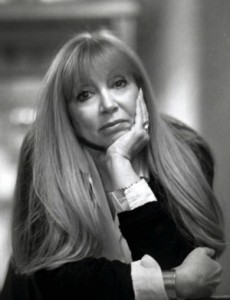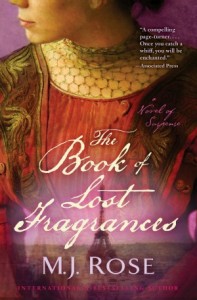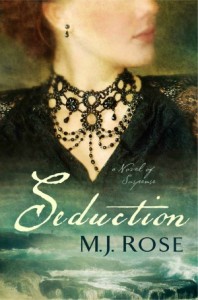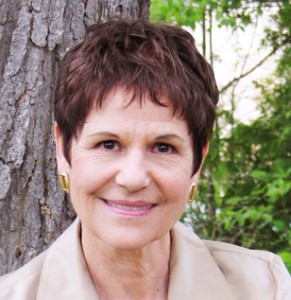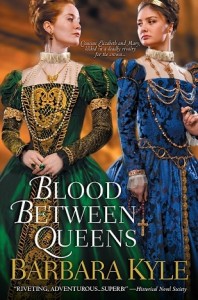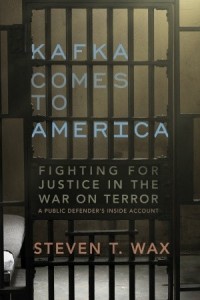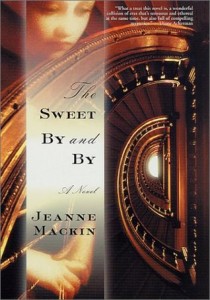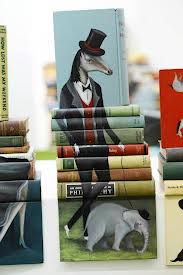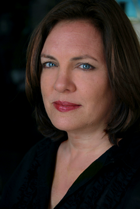 It is my pleasure to introduce Alison McMahan a filmmaker and president of Homunculus Productions, LLC and author. She is co-presenting a session on book trailers at the 2013 Historical Novel Society Conference in St. Petersburg, Florida. She has published two non-fiction books, the award-winning book Alice Guy Blaché, Lost Cinematic Visionary (Continuum 2002) (translated to Spanish and optioned for a film) and The Films Of Tim Burton: Animating Live Action In Hollywood (Continuum 2005). She has just completed her first historical novel, The Road to Santiago, set in tenth-century Spain and on the First Crusade.
It is my pleasure to introduce Alison McMahan a filmmaker and president of Homunculus Productions, LLC and author. She is co-presenting a session on book trailers at the 2013 Historical Novel Society Conference in St. Petersburg, Florida. She has published two non-fiction books, the award-winning book Alice Guy Blaché, Lost Cinematic Visionary (Continuum 2002) (translated to Spanish and optioned for a film) and The Films Of Tim Burton: Animating Live Action In Hollywood (Continuum 2005). She has just completed her first historical novel, The Road to Santiago, set in tenth-century Spain and on the First Crusade.
I am looking forward to Alison’s HNS Conference presentation on book trailers, something every author can benefit by: How to best promote our works through video!
Q: What got you first interested in historical fiction?
I always loved reading historical fiction. As a teenager I preferred YA historicals like The Witch of Blackbird Pond and The Door In the Wall. The first adult novel I read was Georgette Heyer’s Beauvallet. From there I went to T.H. White’s Once and Future King, Mary Renault, Daphne Du Maurier, Mary Stewart, and more recently, Sharon Kay Penman, Diana Gabaldon, Guy Gavriel Kay, Anne Perry, and Cecelia Holland. I’m particularly fond of stories set in the middle ages, but I also like Victorian literature and sci-fi, and steampunk and gaslight mysteries.
Q: How do you find the people and topics of your books?
Usually I first get inspired by a place and a time, such as the pilgrimage trail to Santiago in the 10th century or St. Louis in the 19th, and develop a story for that milieu. I like tying together historical trends and current politics; I was inspired to write about a Moorish convert to Christianity who becomes a spy for Raymond de Toulouse on the First Crusade after the U.S. invaded Iraq.
Q: Do you follow a specific writing and/or research process?
Because I grew up in Spain a lot of my writing has something to do with Latin culture. Also, I’m a filmmaker, and that means I have to travel a lot. Often just walking through a place like Cordoba in Spain will make me want to write a story that is set there. Then I do some research until I figure out what kind of story it might be. I probably do too much research, because I really enjoy that phase, especially if it involves looking at art. Right now I’m writing a series of short stories featuring automata in 16th century Spain. The first one is set in Lerma (near Burgos), the second on in Toledo, and the third will be set in Malaga. Walking through a place like the Duke of Lerma’s palace in Lerma, which is now a hotel, gave me this creepy feeling. I did some research and found out that the Duke of Lerma was responsible for the exile and genocide of hundreds of thousands of Moriscos in 1610. That tied in to the novel I just finished so I decided to write a story about that. The challenge is to write about historical figures but still make them into living, breathing genocidists that can still fall in love with an automaton.
Q: For you, what is the line between fiction and fact?
I’m a film historian; my book on the first woman filmmaker, Alice Guy Blaché, Lost Cinematic Visionary (Continuum 2002), put her back in the history books after she had been unjustly forgotten. That was a ten-year odyssey. There was a lot of resistance to my discoveries from male film scholars which meant that I had to be as precise as possible about everything I published. As a result I’m a real stickler for research and precision.
In Santiago, the lead characters are “little people,” a peasant, his children, a squire, the daughter of a Moorish merchant. They interact with characters like Raymond de Toulouse and the Emperor Alexius of Constantinople. I do my best to base those scenes on historical sources. I also research technologies, food, and religious practices. It’s important to be accurate with world building, even while spinning a romance or an epic adventure.
Q: Do you have an anecdote about a reading or fan interaction you’d like to share?
Before I published my book about Alice Guy Blaché, I gave a talk at a film festival in France. There was a woman there, Joan Simon, who was also considering writing about Alice Guy, but after hearing my talk she introduced herself to me and became a big supporter of my research. She fought avidly to preserve many Alice Guy films that I had identified and curated a retrospective of Alice Guy’s work at the Whitney Museum in the winter of 2009, a huge accomplishment. It just shows the impact a single reading can have, even if only one person really hears you.
Q: Where do you feel historical fiction is headed as a genre?
Right now it seems that historicals exist mainly as hybrids: historical romances, historical mysteries, historical sci-fi forms like steampunk. I love all of those genres. I’m a big fan of alternative history. But I think that “straight” historicals might be poised for a comeback, because of the complexity of our political situations. Historicals are still popular with the young adult readers. They are going to want to keep reading historicals as they grow up. However, TV series seem to be filling some of that need, so it’s hard to say.
Q: Is there an era/area that is your favorite to write about? How about to read?
Since I’m an expert in early film technologies and a film historian, the 19th century in France, England, and the U.S. hold a special appeal for me. And because I grew up in Spain, surrounded by beautiful medieval architecture, medieval Spain holds a particular appeal for me as well, both as writer and reader. Lately I’ve become more interested in 16th and 17th century Spain.
Q: What are your favorite reads? Favorite movies? Dominating influences?
In addition to what I listed above, I read a lot of non-fiction. Because I’m fluent in Spanish and French I can read a lot of historical documents from the Middle Ages, as well as novels in Spanish by people like Ildefonso Falcones and Gabriel Garcia Marquez. For a companion book to Santiago, set in Cordoba in the 12th Century, I’m reading Maimonides and other philosophers.
In terms of writing style, I was very influenced by Sigrid Undset’s decision to write her Kristin Lavrandsdatter books using only English words that were derived from Anglo Saxon. That gave her work an authentic sound, it seemed to me, and I tried to do something similar in Santiago: avoid very modern-sounding words and concepts, emphasize words that come to us from Arabic and Latin, for example. At the same time I really liked the flow of the early Baedeker travel guides and the style of art historians like John Ruskin. They write in English in a way that resembles Spanish, with long, flowing sentences.
As for movies, I liked The Kingdom of Heaven and the mini-series based on Ken Follett’s novel, Cathedral. For years Antonio Banderas has been trying to make a movie about the fall of Granada, the last Moorish Kingdom in Spain, I really wish he could get that made because that would be a wonderful film.
There have been some great historical films recently, like A Royal Affair, the latest Anna Karenina, which are reminiscent of the Merchant-Ivory films I used to love.
I’ll see any movie where Keira Knightly wears a corset. And I love King Arthur films, even movies like The Knight’s Tale. I like historical fantasies like Game of Thrones.
I also enjoy films where they take on more recent history, like the Chilean film No, starring Gael Garcia Bernal, and the series The Americans currently on TV. We need more books and movies that helps us come to terms with some of our recent history.
Q: Is there a writer, living or deceased, you would like to meet?
Alice Guy wrote many of her own films. I would have loved to meet her. I’m really looking forward to hearing Anne Perry speak at the conference. She is a master at showing a real marriage while also spinning a historical mystery yarn around it, it’s impressive. I heard Cecelia Holland speak at Readercon a couple of years ago and I was very inspired. I also studied with David Anthony Durham; he was a great mentor and continues to be a great inspiration to me. On my first day in the afterlife I hope to have tea with Louisa May Alcott and then get drunk with Daphne du Maurier.
Q: What book was the most fun for you to write?
I really enjoyed writing the Road to Santiago, even though I set myself a real challenge with it, as there are two parallel plots and four points of view, in addition to all the research and the need to develop a style that suited the story.
Q: Can you tell us about your latest publication?
I’m working on getting The Road to Santiago published. My latest book is on the work of Tim Burton, and my latest film is Bare Hands and Wooden Limbs, a documentary about a village of landmine survivors in Cambodia, which will soon air on BBC Scotland and is available on Kanopy.
Q: Do you have a most interesting question or crazy anecdote related to your writing you would like to share?
I was in Toledo last November to give a talk at a film festival. One day, walking around the city, I saw there was a street named “Hombre de Palo” which means “The Wooden Man.” I asked around and was told that Toledo had its own automaton legend, a wooden man built by Juanelo Turriano in the 16th century. The crazy thing is, when I went home and did some research, I discovered it isn’t a legend at all; it’s all true. Turriano was an engineer who built water systems for Toledo and Cordoba, among other things, but he also built automatons, and one of them is in the Smithsonian. It still works! So a story that I thought I would write as alternative history will be closer to straight historical.
Thank you for the interview and see you at the HNS Conference!
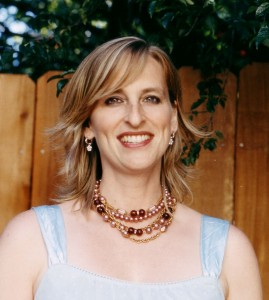 I am happy to introduce writer Erika Mailman, author of The Witches Trinity and Woman of Ill Fame. Erika will be co-presenting at the Historical Novel Society Conference: “The Witchcraft Window: Scrying the Past” with writer panelists Kathleen Kent, Mary Sharratt, and Suzy Witten.
I am happy to introduce writer Erika Mailman, author of The Witches Trinity and Woman of Ill Fame. Erika will be co-presenting at the Historical Novel Society Conference: “The Witchcraft Window: Scrying the Past” with writer panelists Kathleen Kent, Mary Sharratt, and Suzy Witten.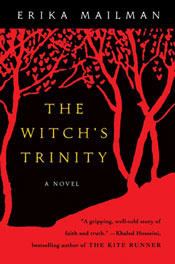 As a child, I was always fascinated by witchcraft and remember reading everything I could get my hands on regarding the topic. I quickly learned it wasn’t pointy hats and riding brooms, but incredible suffering and persecution in part of Europe’s darkest hours. I remember staring at a family tree that hung in our stairwell, penned in some ancestor’s ancient hand, and spotting the name Alvira Cresey. I thought for sure she must be my witchcraft ancestor. It wasn’t until I was an adult, in the middle of writing the book later published as The Witch’s Trinity, that I learned I was the descendant of a woman accused of witchcraft. I received an email from my mother, forwarding one she’d received, that provided a link to information on Mary Bliss Parsons, who underwent trial at least twice and was acquitted. She died of old age. It was supremely uncanny to be working on this novel and learn of my connection to my ancestor of eleven generations ago—the lineage is so direct that my mother bears the Parsons name. She grew up in Southampton, Mass., and Mary Bliss Parsons had lived in nearby Northampton and Springfield (both villages where she was accused). My family had been very proud of its history and, we thought, well-informed, since I remember hearing about Mary’s husband, Cornet Joseph Parsons, a founding father. Yet somehow Cornet’s wife’s dark history had not been similarly passed down.
As a child, I was always fascinated by witchcraft and remember reading everything I could get my hands on regarding the topic. I quickly learned it wasn’t pointy hats and riding brooms, but incredible suffering and persecution in part of Europe’s darkest hours. I remember staring at a family tree that hung in our stairwell, penned in some ancestor’s ancient hand, and spotting the name Alvira Cresey. I thought for sure she must be my witchcraft ancestor. It wasn’t until I was an adult, in the middle of writing the book later published as The Witch’s Trinity, that I learned I was the descendant of a woman accused of witchcraft. I received an email from my mother, forwarding one she’d received, that provided a link to information on Mary Bliss Parsons, who underwent trial at least twice and was acquitted. She died of old age. It was supremely uncanny to be working on this novel and learn of my connection to my ancestor of eleven generations ago—the lineage is so direct that my mother bears the Parsons name. She grew up in Southampton, Mass., and Mary Bliss Parsons had lived in nearby Northampton and Springfield (both villages where she was accused). My family had been very proud of its history and, we thought, well-informed, since I remember hearing about Mary’s husband, Cornet Joseph Parsons, a founding father. Yet somehow Cornet’s wife’s dark history had not been similarly passed down.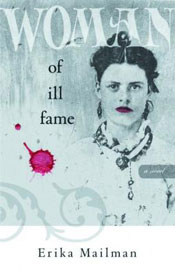 It’s funny, a friend and I were talking about this recently. Why are we so avidly drawn to some historical periods, and some that we have zero interest in? I personally adore anything from the Victorian era and feel deep affinity to the French Revolution—but am left cold by the 1940s. In fact, one of my all-time favorite authors is Sarah Waters. I love her work and am in awe of her intricate plot mapping. I have read everything of hers and adored it—with the exception of The Night Watch, set in the ‘40s, which I have not been able to bring myself to read. In fact, I recently held it in my hands again recently and considered that I really ought to read it…and gently, lovingly placed it back.
It’s funny, a friend and I were talking about this recently. Why are we so avidly drawn to some historical periods, and some that we have zero interest in? I personally adore anything from the Victorian era and feel deep affinity to the French Revolution—but am left cold by the 1940s. In fact, one of my all-time favorite authors is Sarah Waters. I love her work and am in awe of her intricate plot mapping. I have read everything of hers and adored it—with the exception of The Night Watch, set in the ‘40s, which I have not been able to bring myself to read. In fact, I recently held it in my hands again recently and considered that I really ought to read it…and gently, lovingly placed it back.
